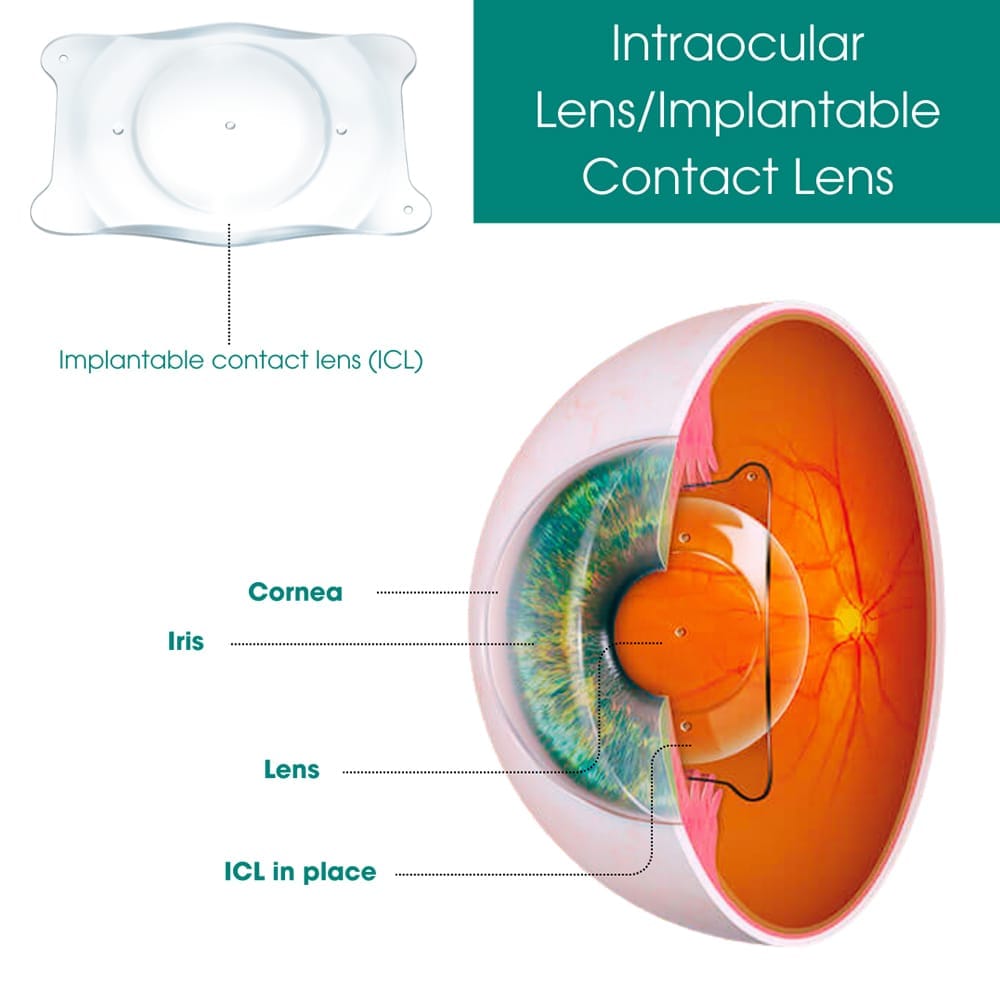Intraocular lenses (IOLs) and implantable contact lenses (ICLs) are advanced optical implants used in ophthalmology surgery to treat visual issues such as cataracts, refractive defects and presbyopia. While implanted contact lenses are similar to LASIK surgery, intraocular lens implants primarily are used to treat cataracts.
IOL and ICL insertion, whether for cataracts or refractive problems like nearsightedness or farsightedness, provide you with a route to clearer vision. There are a variety of intraocular lens implant and implanted contact lens options available, including:
Eye Physicians in New York City in Downtown Manhattan has a team of ophthalmologists and optometrists who specialize in advanced IOL and ICL implantation treatments that aim to restore clarity. They also provide a wide range of other comprehensive eye care solutions such as:

IOLs replace clouded lenses in cataracts, whereas ICLs modify focus points to rectify refractive faults, allowing for better vision without glasses or contacts. The procedures are used to treat a variety of eye conditions, including:
Intraocular lens implants and implanted contact lenses are often considered when other forms of treatment, such as glasses, contact lenses or non-surgical treatments, don’t effectively correct your vision or aren’t the best solution for you. They’re especially useful when you have serious refractive errors or severely irregular corneal shapes. On the other hand, you may just be looking for a more permanent solution to your visual problems.
Both procedures are short, lasting less than 30 minutes, in one session for each eye. You can go home immediately afterward. You should bring someone to drive you home. Aside from one major difference, procedural steps are the same in both treatments and include:
Additionally, the technique for multifocal lens implants and monofocal intraocular lens implants involves removing the natural lens before inserting the artificial lens. ICLs differ in that the natural lens is left in place while the ICL is introduced into the eye and placed beneath the iris and in front of the natural lens. This difference in technique reflects the treatment’s separate purposes. IOL implantation treats cataracts by replacing the clouded natural lens, whereas ICL implantation corrects refractive problems without affecting the natural lens structure.
Both are safe, efficient and quick treatments for permanently correcting your vision. Healing time is extremely fast due to the procedure’s minimally invasive techniques. Most people report returning to normal activities the next day. Other advantages include:
While most surgeries to treat cataracts are done for people over the age of 60, younger people, typically over 45, are more likely to take advantage of implantable contact lenses, very often for the convenience of not having to clean, remove and insert the lenses every day. A thorough discussion with your NYC eye doctor can help you figure out if either of the implants is an ideal solution to help you reach your goals.
If you think you or anyone you know may benefit from an implantable contact lens or intraocular lens implant, then contact Eye Physicians at your earliest convenience for a consultation. Only an experienced specialist can correctly perform a lens implant.
Eye Physicians
110 Lafayette St, Suite 503
New York, NY 10013
(212) 292-4814
Entrust the care of your precious eyesight to highly skilled and experienced eye care professionals. For top-notch ophthalmologists and optometrists in Downtown Manhattan, choose Eye Physicians. Eye Physicians ensures prompt care, precise diagnosis, and personalized treatment plans.
Schedule an Appointment